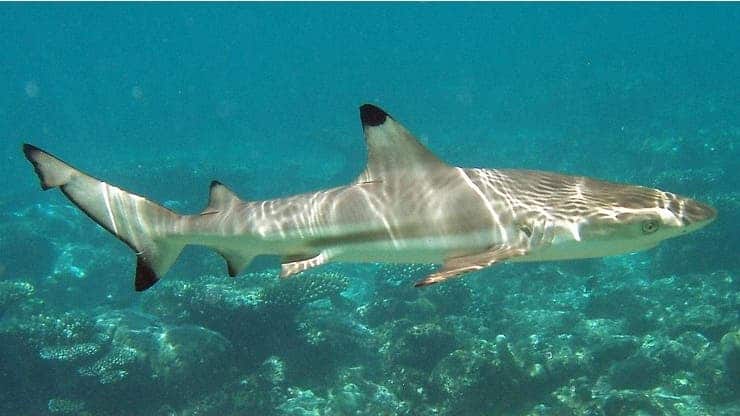
Sharks have long shown to exhibit a remarkable resilience to skin infections around wounds. So much so, that a group from King Abdullah University of Science and Technology’s (KAUST) Red Sea Research Center wanted to find out why.
To do this, the international team collected skin mucus samples from the backs and gills of wild-caught blacktip reef sharks around the Seychelles Islands. Next, they sequenced the 16S rRNA gene from these samples in order to identify the bacteria.
What the researchers found was….well, nothing. The scientists’ analysis revealed no difference between the bacterial communities on injured skin on gills and uninjured gills or backs. Basically, there was no evidence of infection around the wounds. “We were surprised not to find any substantial change in the skin bacterial communities,” says Claudia Pogoreutz, the postdoctoral fellow who led the study.
Pogoreutz’s team was able to locate differences in the bacterial communities gathered from the skin of sharks at different locations. While the sites were only just a few kilometers apart, they could be relatively isolated from each other by factors like ocean currents and the reluctance of the blacktip reef sharks to migrate between habitats or cross deeper straits. The differences in shark skin microbial communities may reflect differences in the ambient environment, such as temperature, population density, nutrient availability or pollution, but scientists cannot rule out the possibility that the changes could provide an adaptive benefit to the sharks.
“This suggests shark skin doesn’t become infected easily and that the native bacterial community of the skin can be maintained even after injury,” says Pogoreutz. “We really need to delve deeper into bacterial functions and innate immunity of sharks to understand what is really going on and how wound healing in sharks is mediated.”
Based on their findings, the researchers identified a core skin microbiome that is conserved across blacktip reef sharks, alongside site-specific differences. The team also found no changes in the microbiome around wounds, suggesting that they don’t get infected or that any infections are too mild to detect.
The idea of a shark’s ability to stave off infection comes at a time when, according to the U.S. Centers for Disease Control and Prevention, bacteria cause more than 2 million infections and 23,000 deaths in the U.S. every year. As a result of overusing antibiotics, bacterial resistance to these drugs is on the rise, which makes it much more interesting how sharks are able to avoid these infections and how these findings might be used to benefit humans.
Already, scientists are using sharks to test the waters for new technology to fight the spread and growth of microbes. For example, Sharklet AF is a coating designed to mimic a shark’s skin, and it reduces the ability of bacteria to adhere to surfaces. But long-term use would result in bacteria accumulation. Researchers added titanium dioxide (TiO2) nanoparticles, which are antibacterial, to a shark skin material that would efficiently fight off microbes.
The shark skin surface without nanoparticles reduced the attachment of E. coli by 70 percent compared to smooth films. But shark skin surfaces with TiO2 nanoparticles exposed to UV light for one hour killed off over 95 percent of E. coli and 80 percent of Staphylococcus aureus. So, attempts are being made to replicate nature’s own bacterial defenses.
However, some questions about the KAUST study do remain. Are regional differences playing a role? Is the microbiome contributing to wound healing and infection resistance? “There’s still so much to learn with respect to shark skin-associated bacteria,” says Pogoreutz.









